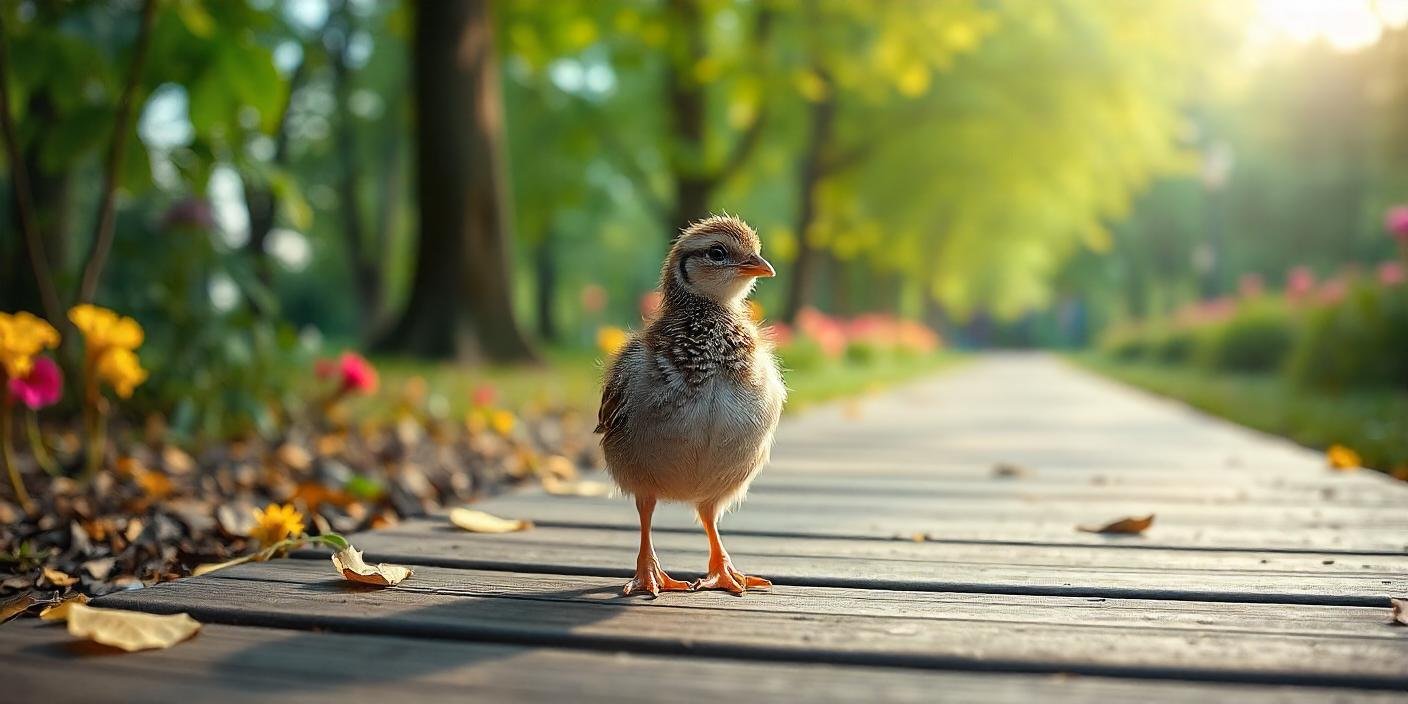Baby quail, often referred to as “quail chicks,” are charming, tiny birds that are becoming increasingly popular among bird enthusiasts and hobby farmers. These birds are not only easy to care for but also provide a variety of benefits, including egg production and pest control.
In this comprehensive guide, we’ll explore everything you need to know about baby quail, including their care requirements, benefits, and challenges.
What Are Baby Quail?
Baby quail are the young of various quail species, primarily from the family Phasianidae. These birds are characterized by their small size, short necks, and round bodies. Unlike other poultry, quail are known for their rapid growth and adaptability, making them suitable for both backyards and farms.
Key Characteristics:
- Size: Typically weigh between 0.5 to 1 ounce at hatching.
- Color: Often feature a mix of browns, grays, and whites, providing excellent camouflage.
- Behavior: Generally social and thrive in flocks.
Types of Quail
There are several species of quail, each with its own unique traits. Here are some of the most common types of quail kept by enthusiasts:
| Species | Description |
|---|---|
| Coturnix Quail | Known for fast growth and high egg production. |
| Bobwhite Quail | Popular for game hunting, known for their distinct call. |
| Gambel’s Quail | Native to the southwestern U.S., with striking plumage. |
| California Quail | Recognized by its unique topknot and sociable nature. |
The Lifecycle of Quail
Understanding the lifecycle of baby quail is crucial for successful care. Here’s a brief overview:
Incubation
Quail eggs take about 17-24 days to hatch, depending on the species and incubation conditions.
Hatching
Once they hatch, chicks are precocial, which means they are fairly mature and able to move around on their own.
Growth Stages
- Chick Stage: 0-6 weeks. Rapid growth and feather development.
- Juvenile Stage: 6-12 weeks. Gradual transition to adult behavior and plumage.
- Adult Stage: 12 weeks and older. Fully developed, ready for breeding or egg-laying.
Housing Requirements
Creating a suitable habitat for baby quail is essential for their health and well-being. Here are key considerations:
Space Needs
- Chicks: Require at least 0.5 square feet per chick in the brooder.
- Adults: Need a minimum of 1 square foot per bird in a coop.
Brooder Setup
- Use heat lamps to maintain a temperature of 95°F for the first week, decreasing by 5°F weekly.
- Provide bedding such as straw or wood shavings, ensuring it is clean and dry.
Outdoor Enclosure
- Quail thrive in outdoor runs with protective fencing.
- Incorporate hiding spots and dust baths to mimic their natural environment.
Feeding Baby Quail
Proper nutrition is vital for the growth and health of baby quail. Here’s what you need to know:
Starter Feed
- Use a high-protein starter feed (24-28% protein) designed specifically for quail.
- Provide feed in shallow dishes to prevent choking.
Supplements
- Offer crushed eggshells for calcium, especially for females preparing to lay eggs.
- Incorporate fresh greens and insects to diversify their diet.
Water
- Make sure they have constant access to clean, fresh water. Use shallow dishes to reduce the risk of drowning.
Health and Common Issues
Ensuring the health of baby quail is crucial. Here are some typical issues and their remedies:
Common Health Problems
- Coccidiosis: A parasitic infection common in young birds. Symptoms include diarrhea and lethargy. Prevent with good sanitation and consider medicated feed.
- Respiratory Infections: Caused by poor ventilation. Ensure adequate airflow in housing.
Preventive Measures
- Maintain cleanliness in the brooder and coop.
- Keep an eye out for signs of illness and seek veterinary advice if necessary.
Benefits of Raising Baby Quail
Raising baby quail has numerous advantages. Here are some key benefits:
- Rapid Growth: Quail mature quickly, often ready for laying eggs within 6-8 weeks.
- Egg Production: Female quail can lay up to 300 eggs per year, providing a sustainable source of food.
- Space-Efficient: Quail require less space compared to chickens, making them ideal for small backyards.
- Pest Control: Quail eat insects and weeds, naturally controlling pests in gardens.
Pros and Cons of Quail Ownership
| Pros | Cons |
|---|---|
| Quick maturation | Limited lifespan (2-3 years) |
| High egg production | Requires careful management |
| Low space requirements | Can be noisy |
| Natural pest control | Sensitive to environmental changes |
FAQs
Baby quails primarily eat a high-protein starter feed designed for game birds, supplemented with fresh greens and insects for variety.
For optimal growth, feed baby quail a specialized starter feed containing 24-28% protein, along with crushed eggshells for calcium.
To care for baby quail, provide a clean, warm brooder, maintain proper nutrition, and ensure access to fresh water at all times.
Feed baby quail a high-quality starter feed and include small amounts of fruits, vegetables, and insects to enhance their diet and promote health.
Baby quail should be fed a high-protein starter feed, along with greens and insects for variety.
Conclusion
- enhance your backyard or farm in numerous ways. Their rapid growth and prolific egg production make them an attractive option for those looking to diversify their poultry.
- Quail eggs are not only a delicacy but also a nutritious addition to any diet, packed with vitamins and minerals.
- Moreover, raising quail requires less space compared to traditional poultry, making them suitable for small farms or urban settings. Their natural foraging behavior helps control pests, providing an eco-friendly solution for maintaining your garden.
- However, successful quail husbandry comes with its own set of challenges. Understanding their specific care needs—including housing, nutrition, and health maintenance—is crucial.
- Regular monitoring and proactive management will ensure that your quail remain healthy and productive.










